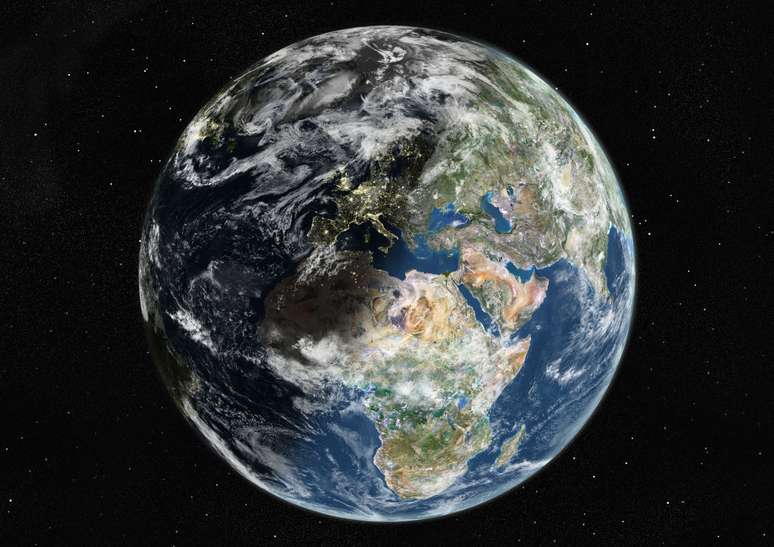Research shows how the climate crisis intensifies a phenomenon that modifies the very structure of the planet, lengthening the days
In addition to natural disasters and global warming, anthropogenic climate change, caused by humanity, intensify a phenomenon that modifies the very structure of the planet. New research has shown the first signs that the Earth’s rotation axis has been affected, lengthening the days.
Get the latest news directly on WhatsApp! Subscribe to the Terra channel
The explanation for the phenomenon is that global warming has accelerated the melting of ice masses in Greenland and Antarctica, at the South Pole. This causes polar waters to flow into the oceans across the planet, especially towards the equatorial region, in the central part of the globe..
According to Benedikt Soja, professor of space geodesy at the Department of Civil, Environmental and Geomatic Engineering at ETH Zurich in Switzerland, the phenomenon causes a change in the mass of the planet. This changes your axis.
Soja compares the effect to the movement of a skater in a pirouette, first with her arms close to her body and then with her arms open.
“The initially fast rotation becomes slower because the masses are moving away from the axis of rotation, increasing the physical inertia. In physics, this is called the law of conservation of angular momentum, and this same law also governs the rotation of the Earth,” he explains.
In addition to changing the axis, the Global warming also causes a decrease in the speed of rotation of the planet and, consequently, the increase in the length of days in milliseconds.

If greenhouse gas emissions remain at current levels and the Earth continues to warm, this is expected to have a greater influence on the planet’s rotation rate than the Moon’s effect, which increases the length of the day cycle for billions of years.
“We humans have a bigger impact on our planet than we think. And that naturally puts a huge responsibility on us for the future of our planet,” Soja emphasizes.
Despite the changes being on the order of milliseconds, the changes are enough to disrupt internet traffic, disrupt financial transactions, and disrupt GPS navigation, processes that depend on precise timing.
Changes inside the Earth
In addition to the melting of ice, another phenomenon intensifies the change in rotation: seismic movements inside the globe, such as the displacement of rocks, which become viscous due to the high pressure in the planet’s mantle.
Heat flows in the Earth’s outer core, which are responsible for generating magnetic fields, can also change the planet’s mass.
In practice, the study conducted by Soja and his team provides the most complete explanation of the changes caused by the polar motion and how it is intensified by phenomena that occur in the core, in the mantle and on the surface, whether they are due to natural causes or caused by human activities. actions.
The study’s lead author, Mostafa Kiani Shahvandi, told the scientific journal Geoscience of nature that it is now possible to explain how and why the Earth’s rotation axis moves with respect to the Earth’s crust, as well as the variations caused by climate change in this phenomenon.
“Ongoing climate change could therefore influence processes deep within the Earth and have a greater scale than previously assumed,” Shahvandi concluded.

‘Kings’ Poison’: What You Need to Know About the World’s Biggest Water Contaminant
Source: Terra
Rose James is a Gossipify movie and series reviewer known for her in-depth analysis and unique perspective on the latest releases. With a background in film studies, she provides engaging and informative reviews, and keeps readers up to date with industry trends and emerging talents.







